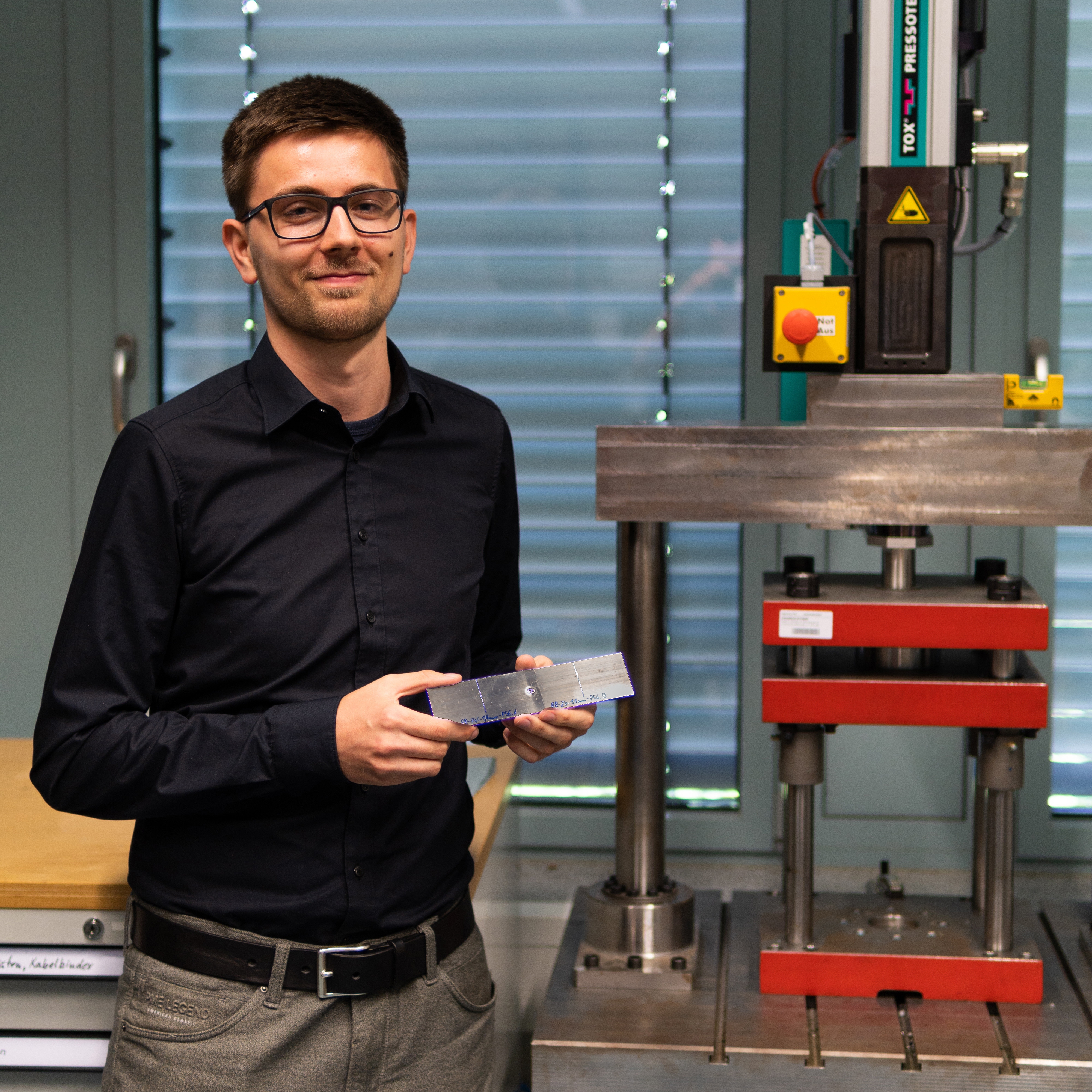MAXIMILIAN SCHLICHT – OUR SIMULATOR SPECIALIST FOR ANY SITUATION: THE ROAD FROM STUDENT WORK PLACEMENT TO SCIENTIST
Maximilian Schlicht has been working as a scientific research assistant at the Fraunhofer IGP since 1 January 2019. In 2017, he started as a student assistant in the Joining and Forming by Plastic Deformation department. Max is a specialist in joining process simulation, which he does with heart and soul.

“We are currently in the process of simulating various joining processes. This shows how well simulation, which is a rather abstract construct, really does reflect reality”, Max explains, simplifying a very complex part of his work. Max, originally from Schwerin, began his mechanical engineering studies at the University of Rostock in 2013. As a student, he made thinking about his professional future a project. „Back then, a friend of mine was already committed to mechanical engineering. I found it very interesting and I prepared my portfolio and my presentation accordingly. My friend is now studying chemistry but I‘ve stuck with mechanical engineering, which so far has proven to be the ideal path for me“, he explains, smiling as he does so.
A part-time job that also helps professional advancement
When he was looking for a part-time job, he became aware of Fraunhofer IGP thanks to a fellow student. “She told me about her part-time job in the field of adhesive bonding technology. That was perfect. I wanted a student job where I could gain work experience during my studies. I applied to my current group – at that time still mechanical joining technology. And it worked out well”.
Subsequently, Max also wrote his student research project and his Master’s thesis at Fraunhofer IGP. The topic of the thesis: “Numerical simulation of the installation process of solid punch rivets with varying geometry and material concepts” He wrote with a few weeks less time than originally planned. This was because he needed enough time to apply for a research assistant position advertised, which was to be filled from 1 January 2019. „I defended my Master’s thesis at the end of November 2018, and then I had to write my application fast“. He got the job.
What’s going on in the area around joint seams?
Max has not yet decided the topic for his PhD, but it will definitely be in the direction of simulation. At the moment, Max is working on the „Friction-based crack initiation“ project, which is presented on page 18 of this report. „The advantage of a simulation – if you trust it – is that you gain knowledge that you cannot measure in any other way. In the current project, for example, it is difficult to see what is going on in the area around the joint seams. This is where we try to help ourselves using simulation, so we can see what happens between the metal sheets when they are joined.
Fraunhofer as a link between university and industry
Max has not regretted his move from university directly to Fraunhofer after his studies. During his studies, Max lived together with a physicist and a chemist: three nerds sharing a small student flat! Both ex-flatmates and very good friends are now also taking their PhDs. “But they have far less time than we do. It‘s much more comfortable here. I have talked a lot about it with friends who went straight into industry. I think that Fraunhofer is definitely a good springboard. The Fraunhofer Society sees itself as the transition between university and industry. You can make a variety of different contacts in industry and even if you don‘t complete your PhD in the end, in my opinion, Fraunhofer is a very good reference on your CV. I am gaining so much experience in project work”.
Last modified:
 Fraunhofer Institute for Large Structures in Production Engineering IGP
Fraunhofer Institute for Large Structures in Production Engineering IGP